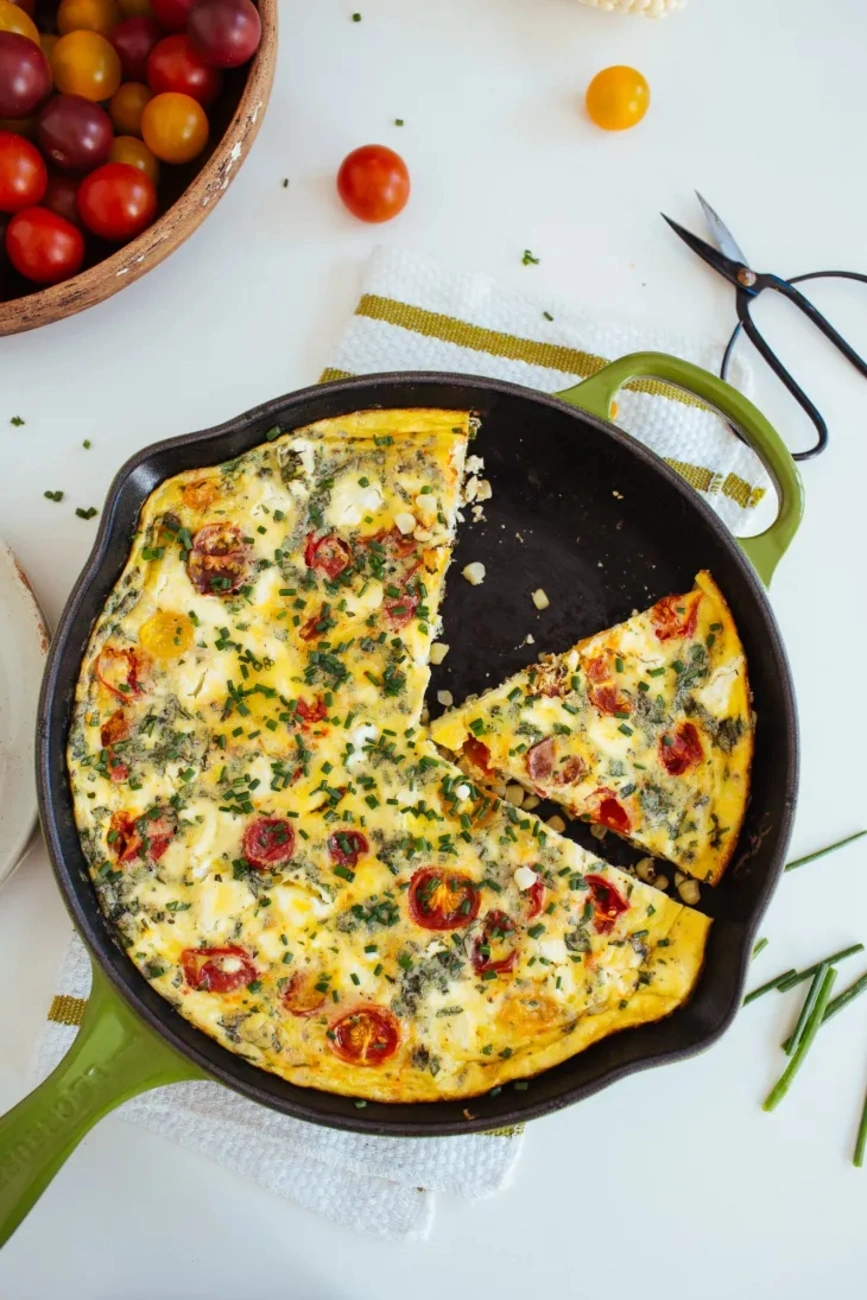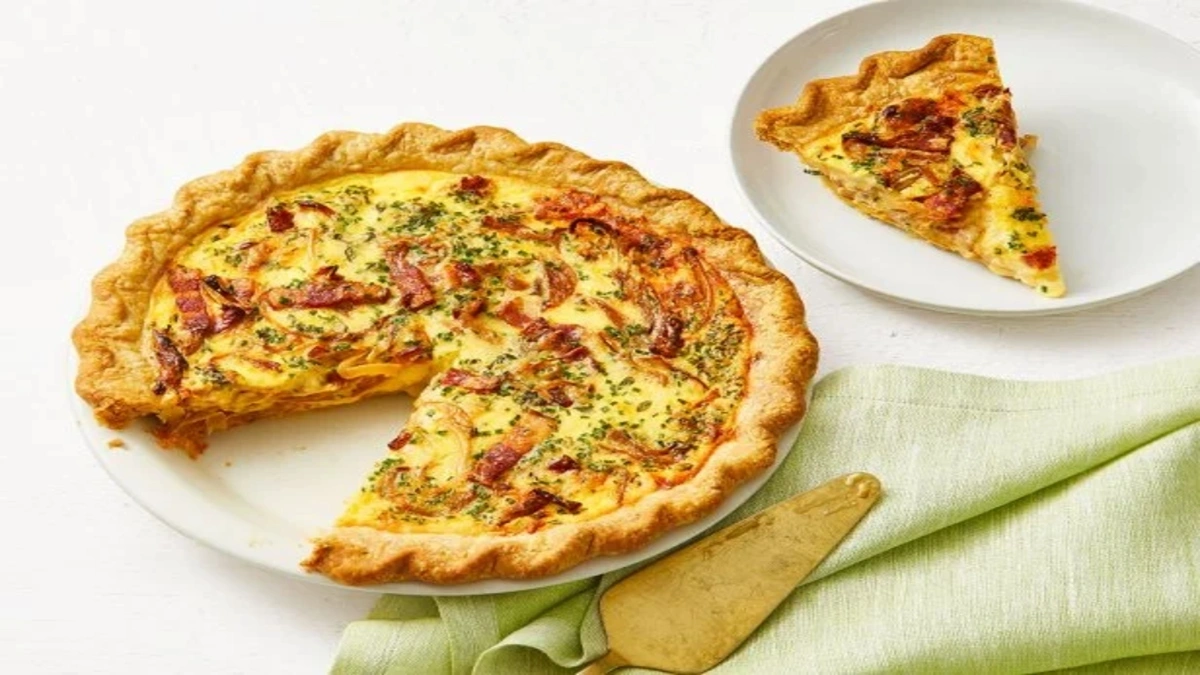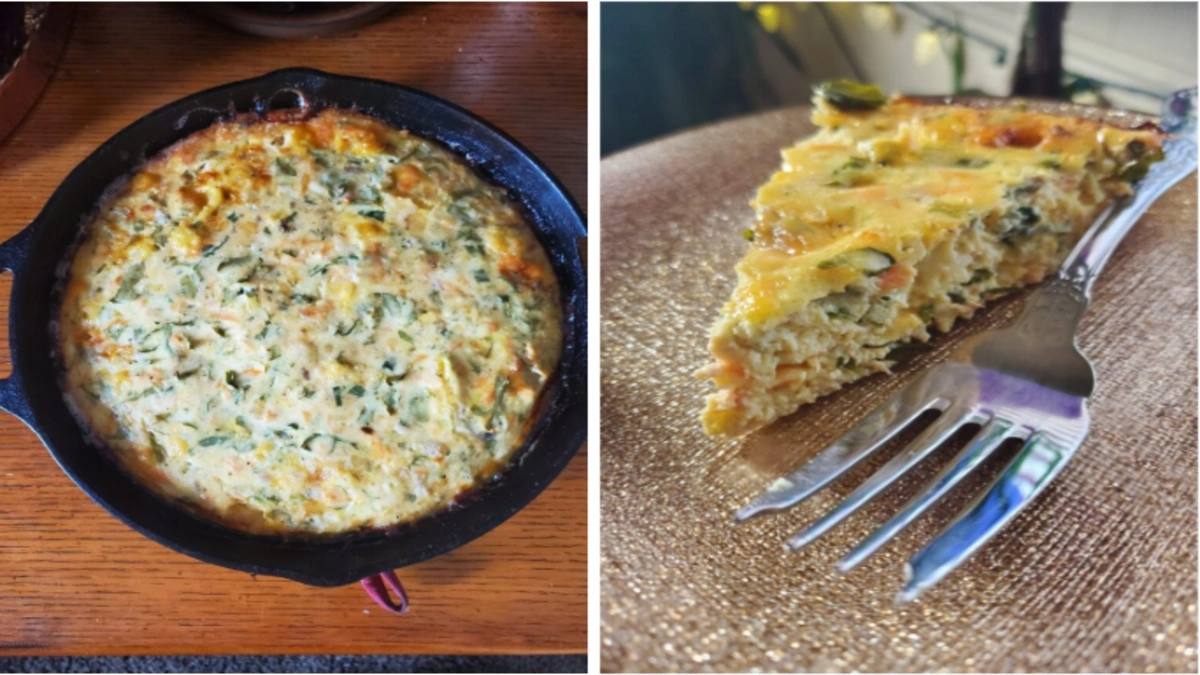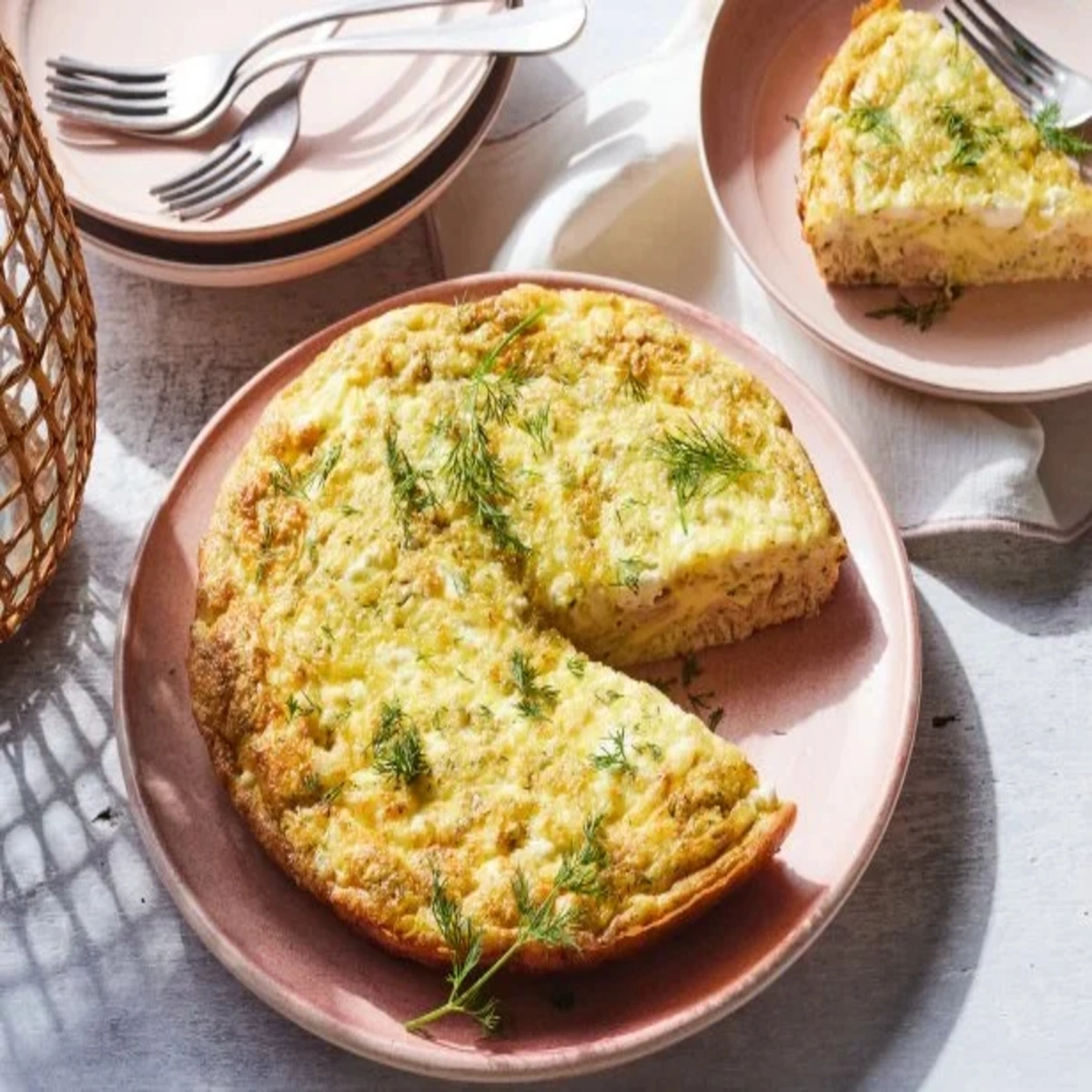Egg based dishes have long been celebrated as staples in culinary traditions worldwide. From the comforting allure of scrambled eggs to the sophisticated elegance of soufflés, eggs offer a versatile foundation for countless recipes. Among these, frittata and quiche stand out as two iconic examples, often gracing breakfast tables, brunch menus, and even dinner plates with their delightful flavors and textures.
Understanding the Differences Between Frittata and Quiche
Origins and Cultural Background
Frittata: A Taste of Italian Simplicity
The frittata originated in Italy, where its name means “fried.” Italian cooks traditionally used it to repurpose leftovers, blending vegetables, meats, and cheeses into a whisked egg mixture. It was then cooked in a skillet, often finished under a broiler for a golden top. Frittatas embody simplicity and resourcefulness, traits that remain essential to the dish today.
Frittatas are celebrated for their straightforward, no fuss preparation. While modern variations have elevated the dish to include gourmet fillings, its essence remains tied to its humble, home cooked origins. Italian households often enjoyed frittatas as a versatile meal served hot or cold, making it an enduring symbol of resourcefulness and flavor.
Quiche: French Elegance on a Plate
Quiche comes from France, particularly the Lorraine region, where the iconic Quiche Lorraine was born. Early versions featured eggs, cream, and smoked bacon in a savory pastry crust. Over time, quiche evolved to include various fillings like cheeses, seafood, or vegetables. This combination of a rich custard filling and a buttery crust highlights its refined, French origins.
Unlike the skillet cooked frittata, quiches are baked in a pie dish, and their flaky, buttery crust sets them apart. This crust provides a sturdy yet tender base, making quiche a centerpiece worthy dish for formal meals and gatherings. Its blend of refinement and heartiness has earned it a lasting spot in French cuisine and beyond.
Crust Presence
Quiche: The Elegance of a Pastry Crust
Quiche always includes a crust, typically a flaky, buttery pie crust that supports the creamy custard filling. This crust adds structure and flavor, making it suitable for formal occasions or gatherings. The crust is often blind baked to prevent it from becoming soggy during baking.
The crust of a quiche provides structural integrity, allowing it to hold heavier fillings like sautéed vegetables, seafood, or meats. It also gives the dish its polished appearance, making quiche a popular choice for brunches, special occasions, and even elegant dinner parties. Preparing the crust involves either blind baking (partially pre-baking the crust to prevent sogginess) or assembling it all at once for baking. This step is crucial to achieving the balance of crispy pastry and custard like interior.
Quiche: The Elegance of a Pastry Crust
Quiche always includes a crust, typically a buttery pastry that enhances the dish’s texture and flavor. However, for a creative twist, you can try alternatives like a tortilla crust. Check out this delicious recipe for Tortilla Quiche Bake for an innovative take on the classic quiche!
Frittata: Crustless and Versatile
Frittata skips the crust entirely, focusing on the egg mixture and fillings. This crust free approach makes it quicker and lighter, appealing to those who want a lower carb or simpler dish. Without a crust, the eggs and ingredients take center stage, delivering a hearty, wholesome flavor.
The lack of a crust also allows frittatas to be incredibly versatile. They can be cooked on the stovetop and finished in the oven, or even served directly from the pan they were prepared in. This simplicity aligns with the rustic, resourceful origins of the dish while allowing the ingredients to take center stage.
Dairy and Egg Mixture Ratios

Quiche: The Creamy Custard Base
Quiche uses a custard base, blending one part egg to two parts dairy, such as cream or milk. This ratio creates a silky, rich filling that gently sets as it bakes. The result is a creamy texture that balances the flavors of added ingredients like cheese or vegetables.
The custard base serves as a perfect canvas for incorporating a variety of ingredients like cheeses, vegetables, meats, or seafood. However, the addition of dairy ensures that these ingredients are suspended in a tender, cohesive filling. The high dairy content also tempers the egginess of the dish, making it milder in flavor and more universally appealing. This balance between creaminess and structure is what elevates quiche to a more decadent and indulgent level.
Frittata: An Egg Centric Delight
In contrast, a frittata leans heavily on eggs as its primary ingredient, with only a small amount of dairy, if any, added to the mix. Typically, a splash of milk, cream, or even yogurt may be incorporated, but the ratio remains predominantly egg based. This makes the texture of a frittata denser and more robust compared to the soft custard of a quiche.
The minimal dairy in a frittata allows the eggs to play a more prominent role, resulting in a dish that is lighter in flavor yet substantial in texture. This simplicity aligns with the frittata’s origins as a quick and adaptable meal, where the focus is on the ingredients mixed with the eggs rather than the custard like consistency.
Cooking Methods
Quiche: Oven-Baked Elegance
The preparation of a quiche is a methodical process that takes place entirely in the oven. The journey begins with the crust, which is often pre-baked, or “blind baked,” to prevent sogginess when the filling is added. This step involves lining the pie dish or tart pan with pastry dough, filling it with pie weights, and baking it until partially cooked and set. Blind baking ensures the crust retains its structure and delivers the desired flakiness.
Once the crust is ready, the creamy custard mixture, consisting of eggs, dairy, and a medley of chosen fillings, is poured into the shell. The quiche is then placed in the oven and baked at a moderate temperature, usually around 350°F (175°C), allowing the custard to cook gently and evenly. The result is a silky, set filling encased in a golden, crisp crust. The slow baking process ensures that the rich, creamy texture of the custard is preserved without curdling.
Frittata: Stove to Oven Simplicity
A frittata, in contrast, employs a more dynamic cooking method that begins on the stovetop. The egg mixture, combined with fillings such as vegetables, meats, or cheese, is poured into a hot, greased skillet. This stovetop phase allows the eggs to set on the bottom and ensures the added ingredients are evenly distributed.
Once the edges of the frittata start to firm up, the skillet is transferred to the oven or placed under a broiler to finish cooking. This step ensures the top of the frittata is fully set and develops a lightly browned, slightly crispy surface. Unlike quiche, a frittata is often served directly from the skillet, highlighting its straightforward preparation and rustic appeal.
Texture and Consistency
Quiche: A Luxurious, Custard Like Filling
The texture of a quiche is one of its most distinguishing features, celebrated for its rich and creamy consistency. Thanks to the higher proportion of dairy in the egg mixture, the quiche achieves a custard-like interior that is soft, smooth, and almost velvety. The high liquid content ensures that the filling sets gently as it bakes, resulting in a tender yet cohesive structure that melts in your mouth.
The crust adds a contrasting crunch, balancing the rich filling with its crisp, flaky texture. Together, the creamy custard and the buttery crust create a sophisticated mouthfeel, making quiche a delight to savor during leisurely brunches or formal occasions.
Frittata: Firm, Fluffy, and Satisfying
In contrast, the texture of a frittata is much firmer and more robust, reflecting its egg centric composition. Without the heavy presence of dairy, the eggs take center stage, creating a dense yet tender structure. The exterior of a frittata, particularly the bottom and edges, develops a slight crispness during stovetop cooking, while the interior remains fluffy and moist.
The fluffy texture is achieved through gentle whisking of the eggs, which incorporates air and ensures a light, tender consistency despite the dish’s simplicity. Each bite of a frittata offers a heartier, more textured experience, with the ingredients—such as vegetables, cheeses, or meats—dispersed evenly throughout.
Common Fillings and Variations

Quiche: Classic and Sophisticated Combinations
Quiche is renowned for its versatility and ability to incorporate a wide range of flavorful ingredients, making it suitable for both traditional and inventive variations. Classic quiches often feature a balance of cheeses, meats, and vegetables, suspended in the creamy custard filling.
One of the most iconic versions is Quiche Lorraine, a dish originating from the Lorraine region of France. It typically includes crispy bacon or lardons, Gruyere cheese, and a rich custard. Other popular fillings include:
- Cheeses: Gruyere, cheddar, feta, or goat cheese.
- Meats: Ham, sausage, smoked salmon, or prosciutto.
- Vegetables: Spinach, mushrooms, leeks, tomatoes, or asparagus.
Modern interpretations might include caramelized onions, roasted bell peppers, or even sweet elements like butternut squash for a unique twist. The flexibility of quiche allows for endless flavor combinations, catering to a variety of tastes and occasions.
Frittata: A Canvas for Creativity
The frittata is equally adaptable, celebrated for its ability to transform simple ingredients into a delicious, satisfying dish. Its origins as a way to use up leftovers make it a practical and customizable choice for any meal.
Common additions to a frittata include:
- Vegetables: Zucchini, bell peppers, spinach, kale, onions, or potatoes.
- Cheeses: Parmesan, mozzarella, ricotta, or cheddar.
- Meats: Sausage, bacon, chicken, or smoked salmon.
Unlike quiche, which requires planning for a crust and custard, frittatas are a go to for quick, adaptable meals. Leftover roasted vegetables, bits of meat, or small portions of cheese can be effortlessly incorporated, making it ideal for reducing food waste.
Nutritional Differences
The nutritional profiles of quiche and frittata differ significantly due to their preparation methods and key ingredients, particularly the crust and dairy content.
Quiche: Rich and Indulgent
Quiche tends to be higher in calories and fat, primarily because of its buttery crust and the generous amount of dairy used in its custard. A standard slice of quiche can contain approximately 300–500 calories, depending on the fillings and crust thickness. The high fat content, including saturated fats, comes from heavy cream, cheese, and the crust.
Protein levels in quiche are moderate, with an average slice providing about 10–15 grams, influenced by ingredients like eggs, cheese, and meats. However, the calorie to protein ratio is relatively high, making quiche a richer, less lean option.
Frittata: Lighter and Protein Rich
Frittata, being crestless and using minimal dairy, is a lighter alternative. A serving typically contains around 200–300 calories, depending on the fillings. The absence of a crust and the reduced dairy content contribute to its lower fat levels, making it a more health conscious choice.
Frittatas are also higher in protein relative to their calorie content, often delivering 15–20 grams per serving. The focus on eggs as the primary ingredient ensures a lean source of protein, while vegetables and lean meats add nutrients without excess calories.
Serving Suggestions and Occasions

Quiche: Elegant and Versatile
Quiche is a sophisticated dish often served at brunches, luncheons, or festive gatherings. Its rich and creamy nature pairs well with lighter sides that balance its indulgence. Common accompaniments include a crisp green salad with a tangy vinaigrette, fresh fruit, or a light soup. Quiche is equally delightful served warm, at room temperature, or even chilled, making it a convenient choice for entertaining. Popular occasions include bridal showers, holiday brunches, or family dinners, where its variety of flavors can please diverse palates.
Frittata: Casual and Convenient
Frittatas are perfect for quick weekday breakfasts, weekend brunches, or as a hearty lunch option. Their portability makes them an excellent choice for picnics or meal prepping. Serve frittatas hot or at room temperature, accompanied by roasted potatoes, sautéed vegetables, or a slice of crusty bread. They’re also ideal for casual gatherings, offering a simple yet satisfying dish that showcases fresh, seasonal ingredients.
FAQs
Is a frittata just a crustless quiche?
While a frittata and a crustless quiche may appear similar, they have key differences. A frittata is primarily an egg dish with minimal dairy, making it denser and more egg forward in flavor. It is cooked partially on the stovetop and finished in the oven or under a broiler. On the other hand, a crustless quiche retains the rich custard filling of a traditional quiche, using a higher proportion of dairy to eggs, and is baked entirely in the oven. A crustless quiche mimics a traditional quiche in texture, just without the pastry crust.
Which is healthier, frittata or quiche?
Frittata is generally considered the healthier option because it is crustless and uses less dairy. A typical frittata is lower in calories, carbohydrates, and fat, making it ideal for those watching their calorie intake or seeking a higher protein to calorie ratio. Quiche, with its buttery crust and cream heavy custard, is richer and more calorie dense, offering a more indulgent option.
What makes a frittata so different from an omelet?
Although both are egg based dishes, a frittata differs significantly from an omelet in preparation and texture. A frittata is cooked more slowly and involves mixing the fillings directly into the egg mixture before cooking. It is also thicker and served in slices, similar to a pie or casserole. In contrast, an omelet is cooked quickly on high heat, folded around its fillings, and has a thinner, more delicate texture.
Is a quiche just an omelet?
No, a quiche is not an omelet. While both are egg based, quiche is essentially a savory custard pie. It includes a substantial amount of dairy (usually cream or milk) to create a smooth, custard like texture and is typically baked in a pastry crust.
Frittata and quiche share similar ingredients but differ in preparation, texture, and presentation. Quiche combines a creamy filling with a buttery crust, making it perfect for formal meals. Frittata focuses on eggs and skips the crust, offering a lighter texture suited for casual dining.
Both dishes allow you to experiment with endless filling combinations. You can pair spinach and cheese for a classic choice or use seasonal vegetables and bold flavors for something new. Whether you enjoy quiche’s richness or frittata’s simplicity, both dishes invite creativity. Explore these options and make them your own!

